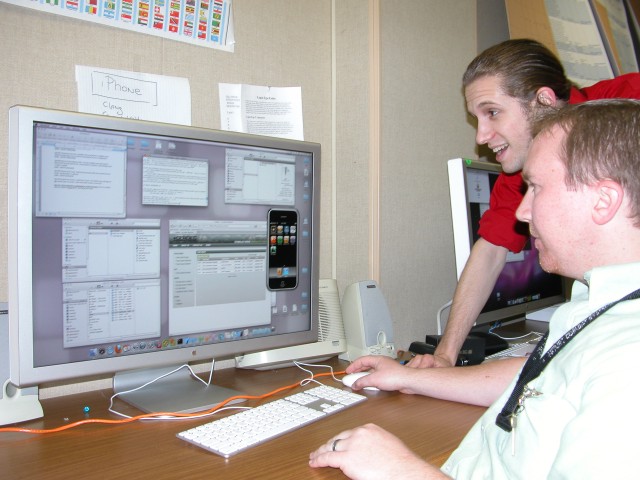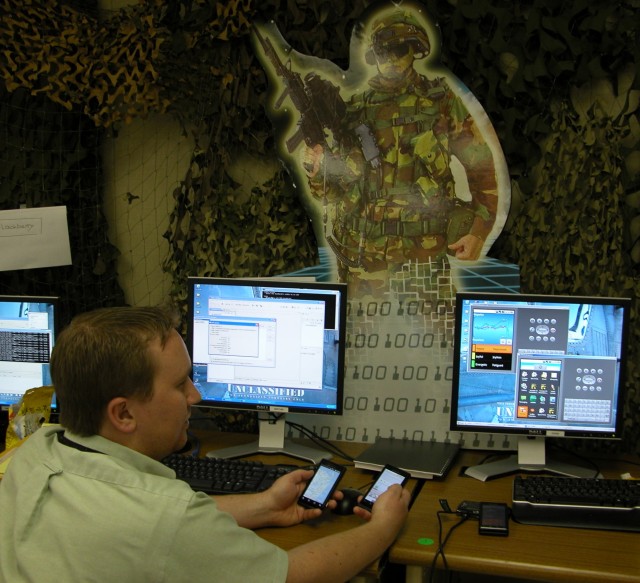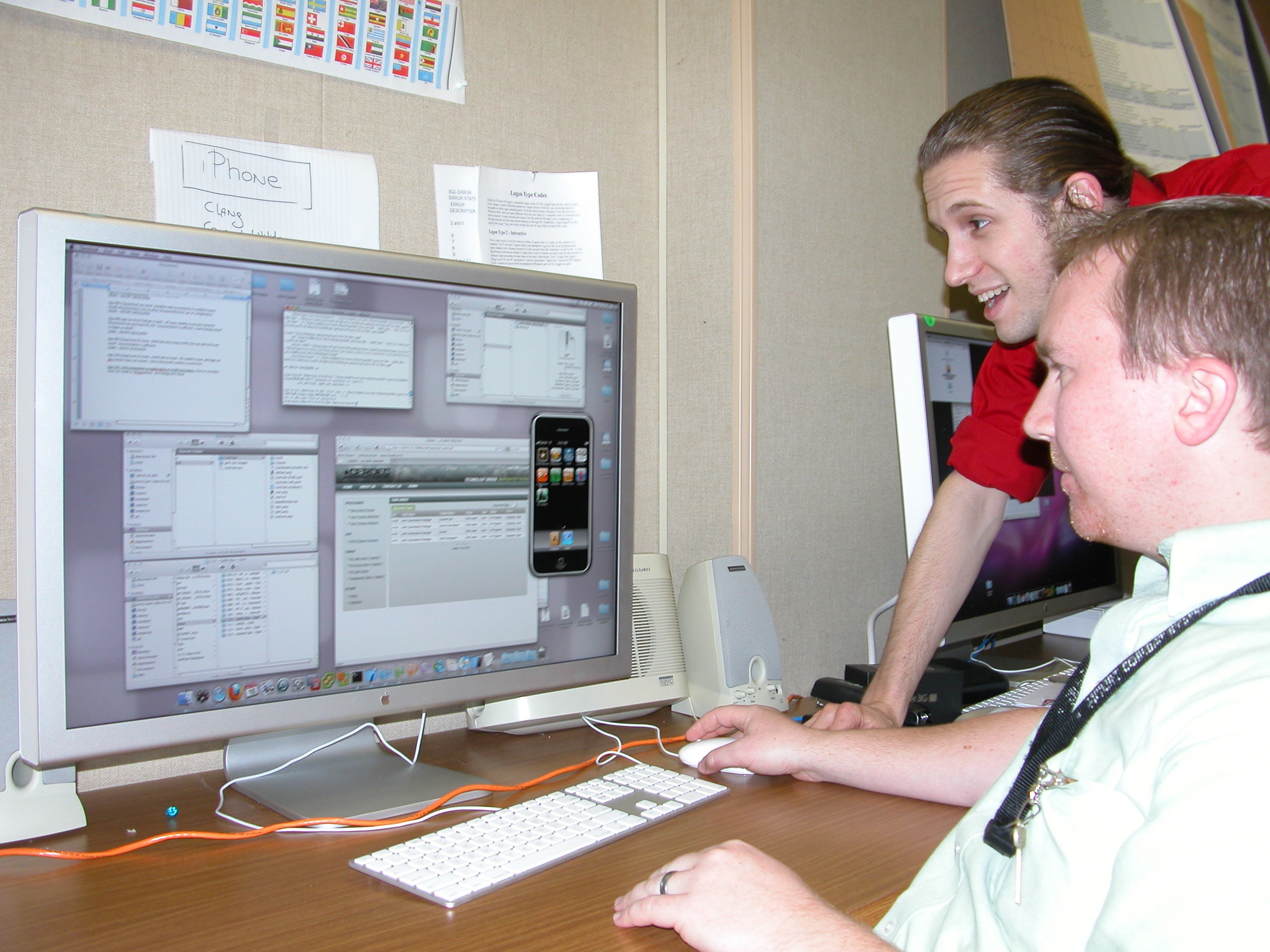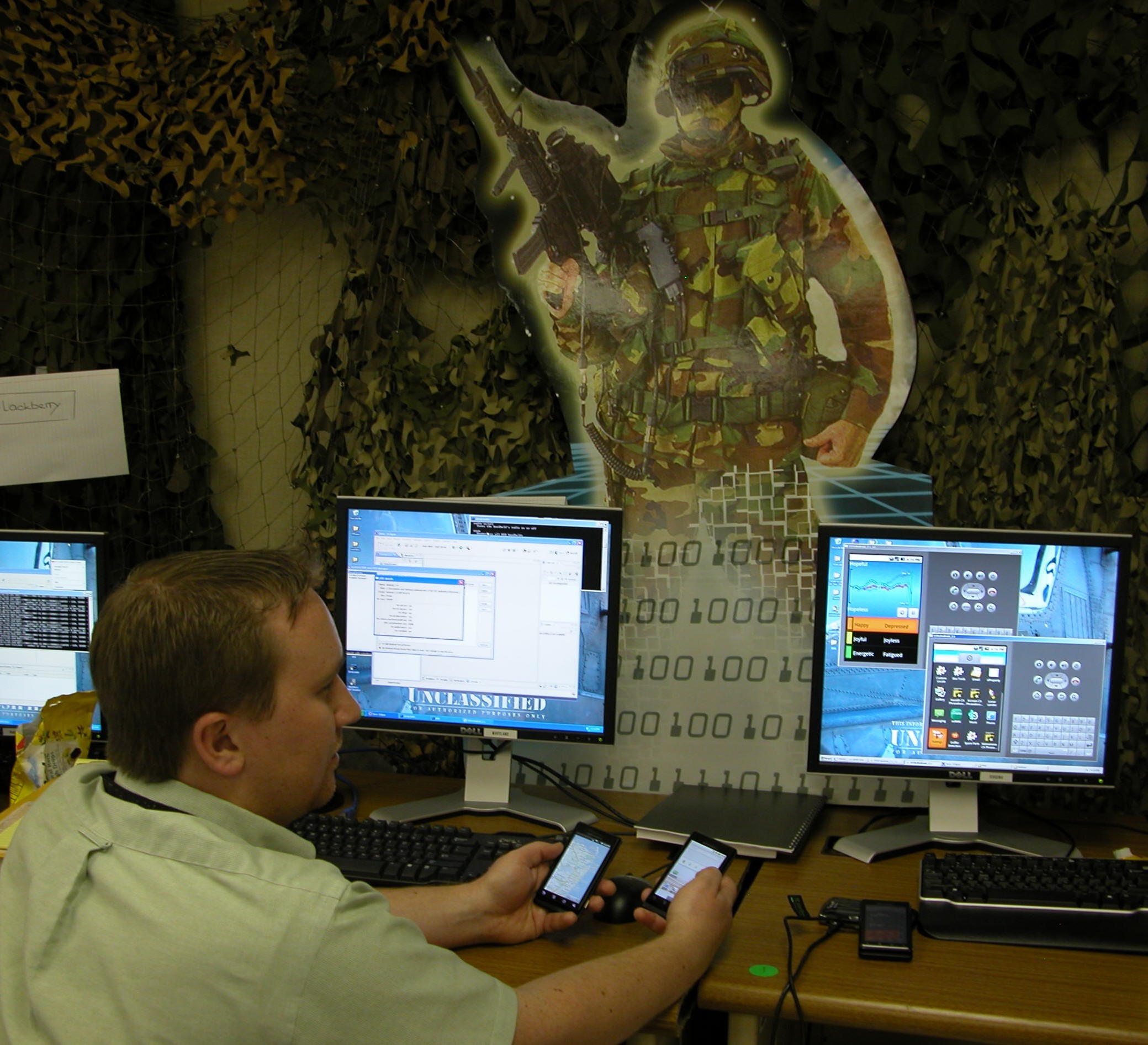FORT MONMOUTH, N.J. Aca,!" The U.S. Army is implementing lessons learned from the Apps for the Army challenge, to support strategic initiatives for Army Software Transformation.
Members of the U.S. Army Research, Development and Engineering CommandAca,!a,,cs communications-electronics center, or CERDEC, met with representatives from the office of the Army Chief Information Officer/G-6, Sept. 28, to deliver processes and observations developed and compiled throughout the competition.
The CERDEC Service Oriented Architecture Center of Excellence provided support to the CIO/G-6 throughout the process. They interviewed applicants, served as technical advisors, answered developerAca,!a,,cs questions, ensured that applications ran correctly, performed certification testing, mitigated all vulnerabilities and configured the operating environments.
Aca,!A"Behind what looked like a little contest is a new wave of innovation and a new way to look at applications. From the back end of it, we got all these lessons learned about certification. ItAca,!a,,cs all about streamlining the way we purchase, deploy and certify applications software,Aca,!A? said Debra Siquieros, an engineer with the Program Executive Office Command, Control, Communications Tactical, or PEO C3T.
Siquieros helped support the competition when she was the lead engineer for the CERDEC Software Oriented Architecture Center of Excellence, or SOA CoE.
Army Software Transformation, or AST, seeks to transform the way the Army defines, develops, tests, certifies and deploys software. The AST strategy establishes the path forward for drastically reducing the time to deliver relevant applications to the Warfighter.
AST has three strategic initiatives: standardize end-user environments and software development toolkits, streamline enterprise software processes and create an Army Software Marketplace. Initiatives are to be developed and validated through pilot programs, such as Apps for the Army, or A4A.
Launched on March 1, A4A, was the ArmyAca,!a,,cs first internal application development challenge. The A4A contest sought to leverage the ingenuity of Soldiers and Army employees to improve or develop service capabilities to meet operational needs.
It also served as a trial ground for enhancing Warfighting effectiveness and business productivity, said Lt. Gen. Jeffrey Sorenson, the Army Chief Information Officer/G-6 in a written statement.
Aca,!A"This pilot program is helping define the business processes needed to make it easier to develop applications and certify software for the Army enterprise,Aca,!A? Sorenson said.
Creating an Army Software Marketplace would establish a platform for collaboration between developers and end-users to create innovative solutions to Warfighter problems, said Travis Stinson, CERDEC project lead for software development evaluation.
Aca,!A"If thereAca,!a,,cs a need in the field and no application available, Soldiers have been known to Aca,!Eoedo it themselvesAca,!a,,c when it comes to developing. Some good ideas have come out of that. What we want to do is let them put those ideas back into the Army and go through all the right certification processes and get it in the hands of every Soldier instead of just that particular unit,Aca,!A? Stinson said.
Aca,!A"The Soldier will be part of the process because he or she will be saying, Aca,!EoeThereAca,!a,,cs a need over here that you guys havenAca,!a,,ct thought of and this is how I think you can do it.Aca,!a,,c It could provide great synergy between the R&D folks here and the deployed Soldiers,Aca,!A? Stinson said.
In order to develop an infrastructure that would support rapid deployment and reaction, the Army is seeking to implement a service-oriented approach.
Aca,!A"Service Oriented Architecture is very complicated and has lots of pieces and systems at different places that work together to produce the required functionality. The CERDEC SOA CoE has been supporting the CIO/G-6 for a few years now, starting with work to set up the Service-Oriented Architecture foundation. So when the project came up, it made sense for our team to work on it because of our SOA experience,Aca,!A? Siquieros said.
SOA takes a traditionally large, complex software system and attempts to model it as smaller pieces that can be rearranged and reused for other purposes, said Greg Wright, a senior software engineer supporting CERDEC SOA CoE.
Aca,!A"If it can be broken down into smaller, reusable pieces called services, it puts us in a position where those services could be combined in other fresh ways to provide additional functionality in a fraction of the original development time,Aca,!A? Wright said.
Aca,!A"ThatAca,!a,,cs really what the service oriented approach is Aca,!" to think of a piece of software to provide a service that can be provided to many customers. The services can be mapped to business capabilities and processes. ThatAca,!a,,cs currently how itAca,!a,,cs used in industry, and we want to do the same thing within the military - streamline processes for efficiency,Aca,!A? Wright said.
In addition to the SOA approach, the Army is assessing technologies such as cloud computing and server virtualization, Wright said.
Aca,!A"These are some of the big technologies that we see now in terms of supporting rapid deployment because they allow us to react quickly,Aca,!A? Wright said. Aca,!A"WeAca,!a,,cve been working directly for the CIO/G-6 Army Architecture Integration Center, helping them put together architecture documents that are going to help them build out the Area Processing Center concept, which will be the ArmyAca,!a,,cs version of a cloud computing platform.Aca,!A?
Cloud computing is Internet-based computing, where shared resources, software and information are provided on demand. Users can access web-based tools or applications and use through a web browser as if it were a program installed locally on their own computer. Clouds often appear as single points of access for all consumersAca,!a,,c computing needs.
The CERDEC SOA CoE team utilized a cloud computing virtualization environment provided by the Defense Information Systems Agency. Participants were able to use the Rapid Access Computing Environment to write and compile code. DISA RACE also enabled the CERDEC SOA CoE team to define a certification process for moving the code through testing and into a production environment.
Aca,!A"What we're working on here is a way to get this capability out to the hands of our Warfighters much more rapidly and do it in a fashion that still conforms to the intent of the acquisition process,Aca,!A? Sorenson said during an A4A roundtable, Aug. 4 at the LandWarNet Conference.
Aca,!A"I think the contest and the contest methodology demonstrated there was a way to do this. By going through the whole process as we did right here, of using specific operating environments, we can simplify the certification and accreditation process and get these systems out there much more rapidly. I think we're beginning to put the pieces in place such that we can do this,Aca,!A? he said.
The processes, baselines and tool documentation delivered by the CERDEC SOA CoE will be used for future apps development and testing efforts, Stinson said.
Related Links:
Army Chief Information Officer/G-6
Research, Development and Engineering Command
Communications-Electronics Research, Development and Engineering Center






Social Sharing